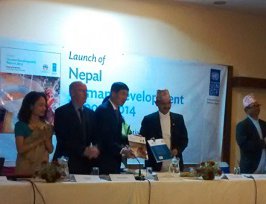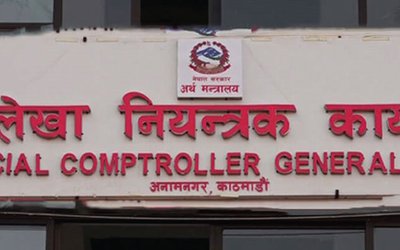
People living in Bajura district of far western region are much poorer than the people living in Kathmandu. Similarly, human development index of terai districts west of Saptari up to Parsa is the lowest like that of far-west and mid-west.
The HDI of hill districts of far-west and mid-west is lower because of lack of accessibility and reach. Despite access and facilities, HDI for Saptari up to Parsa is low.
“Access to road, school and health post do not alone guarantee high HDI. What is required is social mobilization. Although the districts in the far-west and mid-west have highest social mobilization, they lack access to facilities. The terai district west of Saptari have access to basic things. However, their social mobilization is very low,” said Dr. Pitamber Sharma, leader of the team.
The report points out that human development does not only depend upon access to facilities and productive abilities, said Dr. Govinda Raj Pokharel, vice chairperson of National Planning Commission. “Nepal needs to strengthen its inclusive growth development strategies-widen and deepen them, reach out further into the Mid-Western and Far-western regions, reach out to the unreached population.”
As there are growing disparities on the basis of region and ethnicity, Nepal Human Development Report 2014 calls for enhancing skills of the population, while bridging the regional and group divide in human potential and investing in youth and agriculture.
The report titled, “Beyond Geography, Unlocking Human Potential,” argues that Nepal’s potentials are hindered not just by persisting geographical inequalities based on social groups, gender and household well-being.
Jointly launched by vice chair of National Planning Commission Dr. Govinda Raj Pokharel and UN Assistant Secretary General and UNDP Assistant Administrator and Director, Regional Bureau for Asia and the Pacific Haoliang Xu, Nepal Human Development Report 2014 notes the overall picture is improving but inequalities among regions and social groups remain mostly entrenched with signs that some of these may be narrowing. The report points to specific social groups and geographic dimensions of persisting inequalities.
“The report clearly estimates the capacity of Nepal’s youth in contributing to economic growth. However, the report also finds that existing capacities are not being fully utilized. The right people are not working in the right jobs and putting in the right number of hours,” said Xu. “This mismatch between youth potential and actual employment status must be addressed quickly through nationwide vocational training program and pairing of prospective employers with skilled population.”
The report focuses on ways to unlock human potential and reduce regional inequalities. To reduce the inequalities, the report recommends enhancing the rate of economic growth without compromising the essential quality of inclusiveness in both regional as well as ethnic terms.
The report maintains the HDI ranking between regions, urban and rural areas and ethnicities has not changed over the decade. According to report, the far western region remains the least developed, rural areas fare worse than the urban areas and dalits are in the lowest rung of human development.
Among the ecological regions, the Hills has the highest HDI value at 0.520 compared to the Terai at 0.468 and mountains at 0.440. Within the development regions, the central region, at 0.510, ranks at the top, followed by western, eastern, mid-western and far western region.
The highest value for the central region at 0.510 results from high scores in education, higher per capita income, mainly in Kathmandu, Lalitpur, Bhaktapur and Manang districts.
“Unlike the general perception, inequalities at most levels seem to be narrowing in Nepal- inequality between regions, rural and urban areas, and socio-economic groups. However, the inequality seems to be growing between the urban poor and the rich,” said Dr. Sharma. "Nepal’s human development has improved. The HDI score for 2011 looks less than the score for 2009 but this is so because of the calculations. The earlier HDI calculations were based on arithmetic mean, this one is based on more robust geometric means.”
Despite the improvement in HDI values, inequalities persist between regions, ethnicities and gender. Inequalities do not only have geographic dimensions but also ethnic dimensions. “HDI in some places also defy the natural: even where there is access to facilities and high productivity, the HDI is poor. The eastern and central Terai are examples,” said Dr.Sharma.
- TANAHU HYDROPOWER PROEJCT: A Significant Achievement
- Apr 15, 2024
- AMBASSADOR HANAN GODAR: Sharing Pain With A Nepali Family
- Mar 30, 2024
- VISIT OF KfW AND EIB TO NEPAL : Mission Matters
- Mar 25, 2024
- NEPAL BRITAIN SOCIETY: Pratima Pande's Leadership
- Mar 24, 2024
- NEPAL ARMY DAY: Time To Recall Glory
- Mar 15, 2024
















